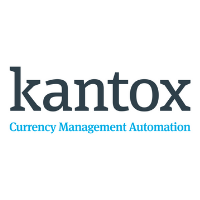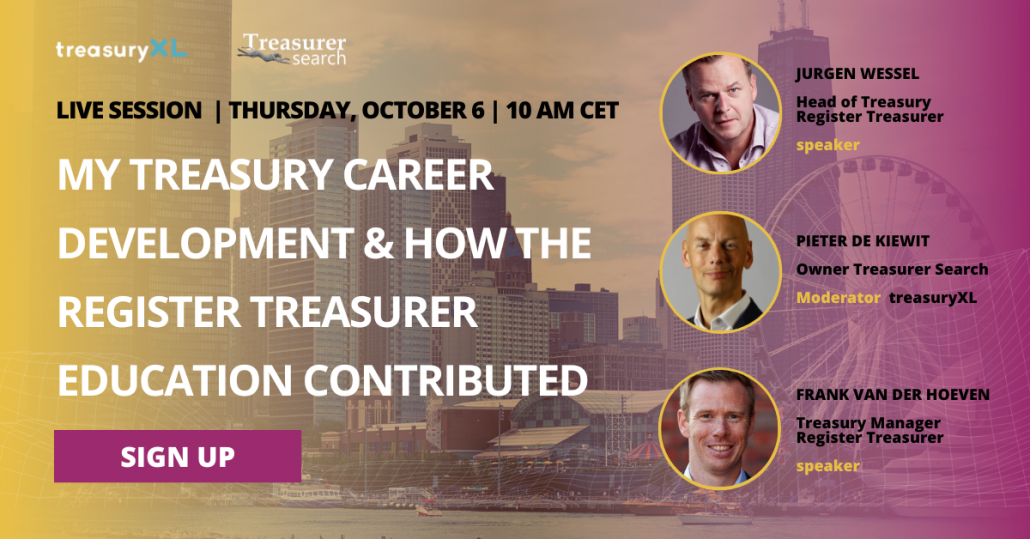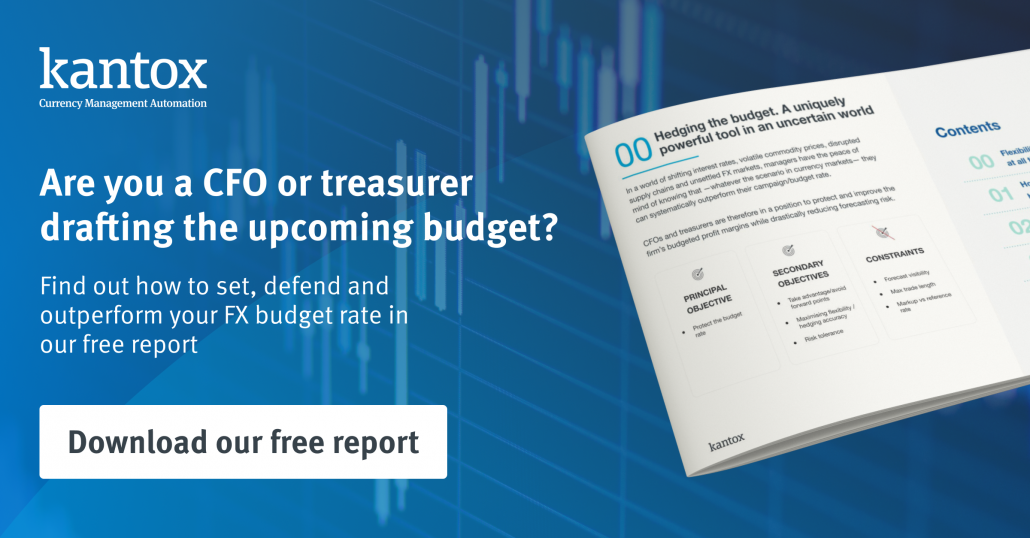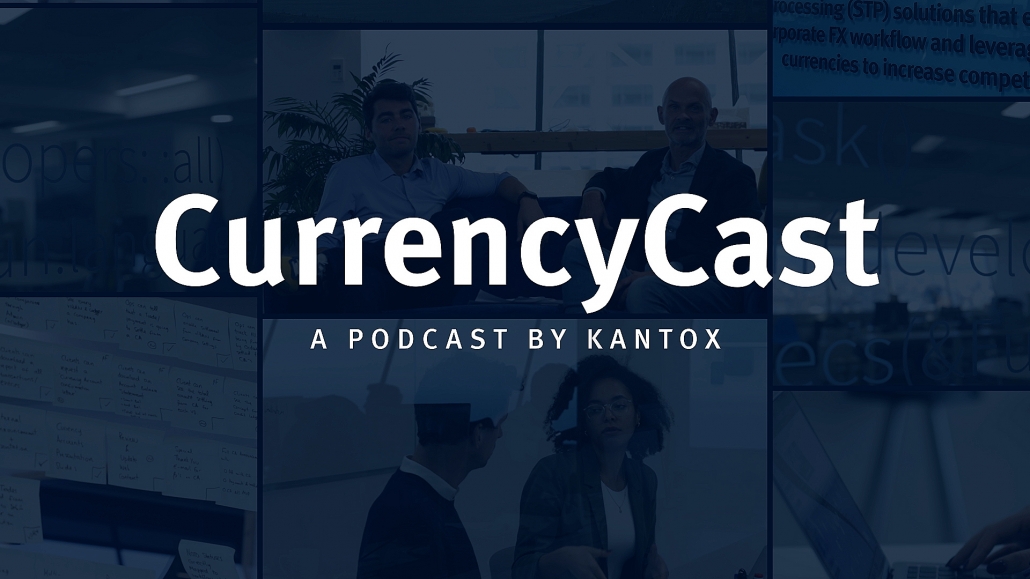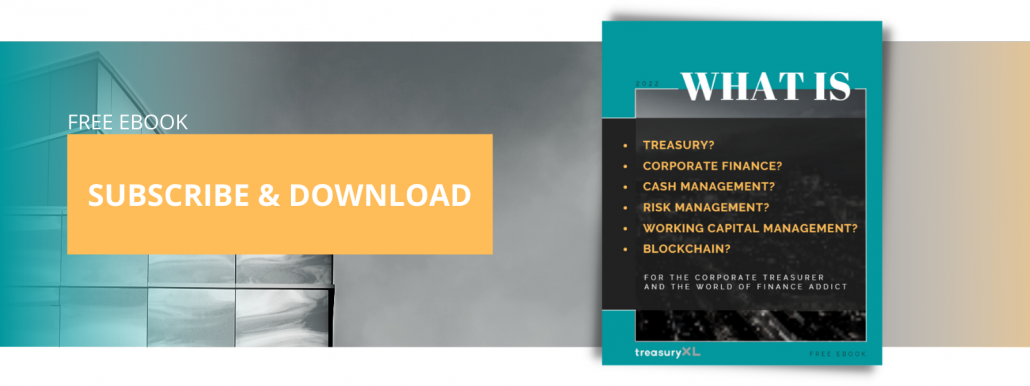BNP Paribas signs an agreement for the acquisition of Kantox
17-10-2022 | treasuryXL | Kantox | LinkedIn |
treasuryXL congratulates highly valued partner Kantox with the announcement that BNP Paribas has signed an agreement to acquire the leading fintech for automation of currency risk management!

Kantox, a leading fintech for automation of currency risk management, will accelerate its growth with the support of BNP Paribas and the strengths of its integrated business model. This acquisition builds on the initial strategic partnership between BNP Paribas and Kantox initiated in September 2019.
BNP Paribas is pleased to announce the signature of an agreement for the acquisition of Kantox, a leading fintech for the automation of currency risk management. Kantox’s software solution has managed to successfully re-bundle the Corporate FX workflow, offering a one-stop-shop, API-driven, plug-and-play solution which has emerged as a unique technology within the B2B cross-border payments sector. Kantox’s technology provides an unrivalled level of automation and sophistication to Corporates in setting up hedging strategies.
By leveraging its integrated business model, BNP Paribas is well-positioned to accelerate and extend Kantox’s offering to a wide range of Corporate clients across the globe.
The acquisition of Kantox is supported by the Global Markets business of BNP Paribas’ CIB division and the business centres of the Commercial, Personal and Banking Services (CPBS) division. The two divisions aim to deploy Kantox technology to large corporates as well as SMEs and Mid-Cap clients, capitalising on market knowledge and the local presence of the group.
This acquisition illustrates BNP Paribas’ Growth Technology Sustainability 2025 plan that sets out to accelerate the development of technological innovations, enhance customer experience and provide best-in-class capabilities to its clients.
Philippe Gelis, CEO and co-founder at Kantox: “We have been serving clients together since 2019 when our technology partnership started. During those 3 years, we spent a lot of time together in the field, getting the opportunity to understand that together we were stronger and able to bring more value to clients. It is the best of both worlds, the leading software company in the currency management automation category and the leading bank in Europe.”
Olivier Osty, Head of Global Markets, BNP Paribas CIB: “We are delighted to strengthen our partnership with Kantox, which brings to our clients a unique and innovative platform to automate their currency risk management. Corporate treasurers are currently navigating turbulent markets, and advanced technology can help mitigate some of the challenges, easing the burden of manual tasks and allowing them to focus on their core business.”
Yann Gérardin, Chief Operating Officer, Head of BNP Paribas CIB: “The acquisition of Kantox presents a further illustration of our ability to establish long-term partnerships with fintechs in an ever-increasing range of areas. Supporting our clients in their international development and providing them with the most advanced technological solutions have always been our priority and are, as such key pillars of our GTS 2025 strategic plan.”
Thierry Laborde, Chief Operating Officer, Head of BNP Paribas CPBS: “This acquisition demonstrates how our distinctive model and integrated platform strategy are able to create value and develop business opportunities. Our leading positions with European companies of all sizes will enable Kantox to further accelerate its development while improving our customers’ experience.”
The acquisition is subject to regulatory approvals and is expected to complete in the coming months.
Eurofinance remains THE event for corporate treasurers | By Pieter de Kiewit
12-10-2022 treasuryXL | Pieter de Kiewit | Treasurer Search LinkedIn
Throughout covid times the organizers of Eurofinance remained active and were able to create interesting web-based events. Still, general opinion in last weeks’ event in Vienna was that there is nothing like the live thing. The programme was packed with interesting content, the event floor with interesting companies and visitors.
By Pieter de Kiewit

Communication leading up to the event and the venue, the Wien Messe, radiated experience in events of this size. The numbers of representatives and visitors were impressive. Luckily, the venue is big enough to not nerve the visitors who have to get used to large crowds again.
The programme was spread out over the very large room for plenary meetings, five large rooms for parallel session with presentations & panel discussions and “open rooms” on the trade floor. Key note speakers like Guy Verhofstadt and Goran Carstedt were able to enthuse with stories beyond the scope of treasury, others covered topics about treasury technology, both practical & visionary and treasury organization, for example about my personal favourite, the treasury labour market.
For many, the trade floor was easily as interesting as the content. Visitors gained market information, for example preparing for a TMS selection and implementation. Also reuniting with old treasury friends and getting to know new ones, was relatively easy during well catered breaks. Some of the visitors created new legends during the Thursday night afterparty that is not covered by this looking-back-blog.
As treasuryXL ambassador I visited the various partners of the platform present and received positive feedback on the event. So Cobase, Kyriba, TIS, CashForce, Nomentia, Refinitiv and CashAnalytics, we hope to see you again in Barcelona again and welcome a number of new ones.
Hasta luego,

Thanks for reading!
LIVE SESSION | My Treasury Career Development & How the Register Treasurer education contributed
29-09-2022 treasuryXL | Treasurer Search | LinkedIn
Are you thinking about how you can shape your treasury career and in need for inspiration? There are plenty of education opportunities, but in what education will you invest?
You are invited to join our next Live Session. Registration is Now Open for:
𝐌𝐲 𝐭𝐫𝐞𝐚𝐬𝐮𝐫𝐲 𝐜𝐚𝐫𝐞𝐞𝐫 𝐝𝐞𝐯𝐞𝐥𝐨𝐩𝐦𝐞𝐧𝐭 & 𝐇𝐨𝐰 𝐭𝐡𝐞 𝐑𝐞𝐠𝐢𝐬𝐭𝐞𝐫 𝐓𝐫𝐞𝐚𝐬𝐮𝐫𝐞𝐫 𝐄𝐝𝐮𝐜𝐚𝐭𝐢𝐨𝐧 𝐂𝐨𝐧𝐭𝐫𝐢𝐛𝐮𝐭𝐞𝐝
There is no standard career path for treasurers but one can learn from the choices and developments of the successful ones.
In this webinar two graduated Register Treasurers will share their stories:
- 🌟 Jurgen Wessel RT is interim Head of Treasury of SHV and has experience in a variety of international companies at HQ and treasury hub level.
- 🌟 Frank van der Hoeven RT van der Hoeven used to be a banker, moved to the corporate side and currently is Treasury Manager at IMCD, well-known for many successful acquisition and integration processes.
They will tell you about how they moved between various stations and will pay special attention to the added value of their post academic degree: The Treasury Management and Corporate Finance programme (RT Programme) at the Vrije Universiteit Amsterdam (VU Amsterdam).
Everyone is welcome to this webinar. This webinar is extra relevant for those who consider joining the RT programme.
🌟Moderator: Pieter de Kiewit of Treasurer Search
🌟Duration: 45 minutes
We can’t wait to welcome you next week!
Best regards,

Kendra Keydeniers
Director, Community & Partners
Download Kantox’s Budget Hedging Report
28-09-2022 | treasuryXL | Kantox | LinkedIn |
Are you a CFO or Treasurer drafting your upcoming budget? Find out how to set, defend and outperform your budget rate in Kantox’s exclusive new report.
Based on real industry insights, you can learn:
🔹 The best way to set a budget rate
🔹 How to delay hedge execution while reducing forecast risk
🔹 How to improve your budgeted profit margins
🔹 Top solutions to automate time-consuming processes
👉 Get your report here
CurrencyCast Season 3 is live!
27-09-2022 | treasuryXL | Kantox | LinkedIn |
Season 3 of Kantox’s #CurrencyCast is live! In the first episode, they examine companies that manage their FX risk via spreadsheets and how they may be exposing their business to a whole other type of danger, spreadsheet risk.
Agustin Mackinlay breaks down the dangers and pitfalls of spreadsheet risk and how it can slowly erode your FX risk management processes.
He walks us through:
🔹 What is spreadsheet risk?
🔹 How to recognise this type of risk
🔹 Where it can arise in the currency management process
🔹 How to manage and eliminate spreadsheet risk
It’s an FX masterclass, all in under 10 minutes.
👉 Watch the episode and read Kantox’s key takeaways here
What’s the best hedging program for your business? Take Kantox’s 1-minute assessment
26-09-2022 | treasuryXL | Kantox | LinkedIn |
Have you seen Kantox’s Currency Management Toolkit?
With rising interest rates, increasing inflation and today’s highly volatile environment, it’s more important than ever for your company to be protected against currency risk.
Take Kantox’s 1-minute assessment and discover the best FX hedging program for your business. You’ll find out which program can most effectively handle your FX needs, help you achieve your goals, and keep you ahead of the curve.
👉 Get started here
What is Pricing Risk (FX Risk) and how to deal with it?
22-09-2022 | Harry Mills | treasuryXL | LinkedIn
Also known as pre-transaction risk, pricing risk occurs between a transaction being priced and agreed upon. It materialises when exchange rates change after a quote has been delivered, either impacting the sales margin or incurring a re-price. treasuryXL expert Harry Mills, founder & CEO of CEO Oku Markets, will explain to us what Pricing Risk is all about, and how to deal with it.
By Harry Mills

Who experiences pricing risk?
Businesses experience pricing risk to a greater or lesser extent depending on the nature of their business, their marketplace, and their sales and purchasing cycles. We find it helpful to consider the following initial points when assessing pricing risk:
- Is the transaction FX-denominated, influenced, or relatively insensitive?
- What is the timeline between quoting and agreement?
- What impact would a +/- 5% or 10% FX move have on margins?
A transaction is “FX-denominated” when it is in a currency other than the firm’s functional currency. An example is a UK business providing a quote to an Irish business for an export sale denominated in euros (instead of GBP).
How much influence? An example…
You’ll likely have an intuitive idea of the level of influence that fluctuations in FX rates have on your transactions, but consider a UK company that designs and builds high-end bespoke summer houses (why not?):
- The company imports unfinished timber and metal fixings priced in dollars, and sources glass and other furnishings and materials from within the UK
- The per-unit cost of production will be affected by movements in the GBPUSD exchange rate because timber is a major cost
- But the basket of production costs also includes the UK-sourced materials, shipping, labour (design and build), amongst others (warehousing, storage etc.)
- So we can see that a 5% drop in GBPUSD wouldn’t result in a 5% increase in production costs – understanding this relationship and ratio is critical
“Businesses should understand the precise impact of currency fluctuations on their costs and/or revenues to determine their FX sensitivity, especially concerning pricing risk”
Harry Mills, Founder & CEO Oku Markets
One-Size doesn’t fit all
Getting to grips with pricing risk can be fairly straightforward for FX-denominated transactions with a straight-through and linear FX impact on the price, but most businesses have a more complex setup.
Many businesses are converting from a just-in-time to a just-in-case stock strategy. which can bring complexity and may add to pricing risk. It’s our view, here at Oku Markets, that there is no one-size-fits-all approach for currency management, so here’s a few areas to think about:
- Stock cycle and costing method
- Pricing strategy and flexibility
- FX price sensitivity (as detailed above)
- The competitive environment and market practices
Pricing risk can impact procurement and sales, although we mostly think about the pricing that we are delivering. What about the pricing we receive, as customers? It’s not uncommon for Chinese exporters to add a large buffer to their prices to factor in fluctuations and depreciation in the USDCNY exchange rate. Read more about China and the yuan.
So it’s worth considering and asking your suppliers and international partners about how they manage FX – is there an opportunity for increased transparency and better terms by tackling the problem together?
FX Risk Map
It might be helpful to visualise the lifecycle of a transaction to identify when currency risk occurs. Again, there is no one-size template for this – every business’ FX Risk Map will look a little different, but here’s a basic setup to get started with:
- Pricing Risk: the FX risk between quote and agreement
- Transaction Risk: the FX risk between agreement and settlement
- Translation Risk: the FX risk between accounting (PO/invoice) and settlement

Dealing with Pricing Risk
Three ways you can reduce pricing risk and deliver more consistent results are:
- Include a quote expiry date – limiting the time reduces risk
- Add an FX buffer to the price – 5% is typical for short periods
- Build an FX clause into the quote – transparency means no surprises
The most appropriate route or combination of mitigating actions is unique to each business. An online travel company delivering live holiday prices will require higher frequency updates to FX rates and a tighter quote expiry date and FX buffer when compared to a company providing quotes for custom-designed summer houses.
When it comes to an FX buffer, we suggest considering the volatility of the currency pair and adjusting for the relevant quote period.
Let us help you quantify your FX risk
Quantifying currency exposure requires thought and specialist skills and expertise. Most FX brokers lack the capabilities to do this properly, resorting instead to emotionally-charged deal-making which can result in poor outcomes for clients.
We’re proud to work transparently with our clients, and we work hard to break the asymmetry of knowledge and information in the FX market.
You can contact us for a review of your currency processes and for our guidance and suggestions at [email protected] or 0203 838 0250.
Thanks for reading 👋

Harry Mills, Founder at Oku Markets
Where did the treasury applicants go? | By Pieter de Kiewit
19-09-2022 treasuryXL | Pieter de Kiewit | Treasurer Search LinkedIn
As treasury recruiters, we should know enough about corporate treasury to do intakes and screen candidates. Also, we should know the latest about what’s happening in the field of recruitment and so we read the publications of Geert-Jan Waasdorp of The Intelligence Group. I would like to share his latest, very interesting article and build the treasury connection.
By Pieter de Kiewit

Labour market pressures are not equally distributed among all employers.
I left a link if you want to read the full article but this is roughly what he says. There is a huge growth in people working since before covid. In parallel, there is a huge decline in active applicants. This pressure in the labour market is not evenly distributed among all employers. The ones that can find new employees can do so because of a strong employer brand and increased investments in own or external recruitment. Also, they are willing to decide quick and offer a better package.
So what does this mean if we project these findings on the corporate treasury labour market? My personal observation is that treasury staff is, on average, less driven by the company brand and more by the job content than candidates from other job types. We learned this working for clients like Tesla and Nike. Employer branding specifically towards treasurers would also be hard, I cannot envision a corporate recruiter promoting his manufacturing company at Eurofinance.
How to adapt?
The obvious low-hanging fruit is that the hiring manager, already at the start of the process, has to organise and choose a mindset in the following: being able to decide quickly, from fewer candidates than before, and offering more than the old standard. Even highly skilled recruiters sometimes underestimate these aspects over time.
The judgement if the internal recruitment team is equipped to tackle the search or whether an external one should do the job – we, Treasurer Search – I will not elaborate on here. What I do want to mention is another obvious source that can be opened. For some of us that are considered a paradigm shift: bringing treasury talent in from abroad, from within the EU or even sponsoring a work permit. I am aware that some of us consider this topic highly political. What I can tell, both from our own organisation, as well as from successful placements with our clients, that this can be a very successful solution. In the Dutch labour market already the majority of candidates placed by us is non-Dutch. This is not a plea to open the borders and not be critical. Regretfully we have examples where this solution did not lead to success as coming to The Netherlands can be hard for the new employee. But also locally found candidates can fail in their new job.
My conclusion is that indeed, the world is different, as is the labour market. And given current demographic developments I do not expect a shift back. Luckily there are solutions but we will have to accept the consequences and cannot lean back. Those that do will shrink and go extinct.
Good luck in your search,
Pieter

Thanks for reading!
Quickly refresh your treasury knowledge? Download our eBook: What is Treasury?
08-09-2022 | treasuryXL | LinkedIn |
This eBook compiled by treasury describers all aspects of the treasury function. This comprehensive book covers relevant topics such as Treasury, Corporate Finance, Cash Management, Risk Management, Working Capital Management.
This eBook was prepared by treasuryXL based on the most useful best practices offered by Treasury professionals throughout the previous years. We compiled the most crucial information for you and wrote clear, concise articles about the key topics in the World of Treasury.
We took a deeper dive into each of the above-mentioned treasury functions and highlight:
- The purpose of each named Treasury function (What is?)
- What specialists do
- Examples of Activities
- Summary of Frequently Asked Questions and answers
- Conclusion
How to receive the eBook ‘What is Treasury’ for Free?
We simply giveaway two presents for you! By signing up for our newsletter you will automatically receive the following in your inbox:
- On Fridays, our Coffee Break weekly newsletter will land in your inbox. In this weekly newsletter, we will highlight the whole week full of the latest treasury news within our community.
- The 41 pages eBook, What is Treasury?
Subscribe, Join, Download and Relax.
Welcome to our community and have fun reading!

Director, Community & Partners at treasuryXL

